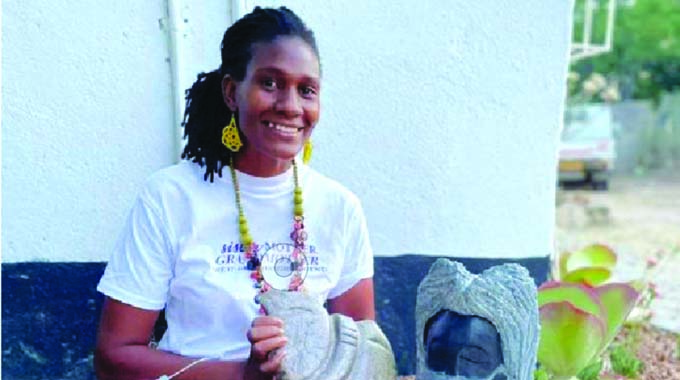Stone sculptors chisel away behind the scenes

Kundai Marunya Arts Correspondent
Sharp clicks can be heard from a distance, the sound of hammers and chisels as they cut into the stone yielding to the creator’s vision.
On another work station, a grinder raves as the masters perfect their different stone works, all synchronising to produce a melody that would easily top radio charts and beam on home stereos if it was another art form.
Sculptors sweat and blister their hands as they pound the stone into submission.
The results are not only eye-catching creations suitable for office and home decorations, but also well packaged messages addressing various issues.
Stone sculpture maybe one of the most excruciating art forms to produce, yet one of the least appreciated genres.
Out of thousands of sculptures created on a daily basis, only a few get to be recognised or talked about, let alone bought for local consumption.
Only a few, social media aggressive sculptors like David Ngwerume whose art pieces on Covid-19 and child marriages earned him some few moments in the limelight get to be celebrated.
Established sculptor Shelton Mubayi, who is son to first generation stone sculptor Sylvester, said there was need to erect sculptures in public space.
“I honestly think there is lesser acknowledgement of stone sculptures in contrast to painting and music,” he said.
“The uptake is too low compared to other genres. Stone sculpture should be seen at public places such as Parliament to begin with and other government institutions.”
A proactive Ngwerume is one of a very few artists who have their works on display in public spheres.
His ‘‘Scales of Justice’’ series was erected outside the Bulawayo High Court and the Harare High Court.
One of the country’s few female sculptors, Patience Gumbo, said there was need for a shift of mindset.
“Sculpture as an art genre is valued and appreciated by the artist and fellow artists who invests time and resources to create the piece,” she said.
“There is really not much recognition and uptake locally in all arts genres be they music, painting, creative writing or sculpture. I have realised the need for mindset shift amongst individuals and view art as a business and source of income.”
Gumbo said locals should show their appreciation by purchasing art work.
“Translating ideas into audio or visual piece is no joke, but requires much passion, concentration and skill,” she said.
“When the locals respect artists, it will be shown through purchases of the artworks and other means of support.
“It is quite sad that many are yet to understand art as a business, both artists and consumers. Hopefully in this lifetime, support will be given where it is due and at least help earn a living.”
Terrence Musiyiwa, founder of Zimbabwe’s first and leading online sculpture gallery Avac Arts said recognition could only be bolstered through innovation.
“Many other art forms have embraced technology and are using it to push for recognition in different ways,” he said. “The same can be done with visual art, thus pushing for visibility on social media through publishing pictures and videos of art works and the creative process.”
Musiyiwa urged artists to work with representatives in pushing for recognition.
“Artists’ core roles are in creating works which take much of their,” he said. “Engaging representation that will push for their visibility is another way that will increase recognition. It works in different genres, music included.”
Musiyiwa encouraged sculptors to create works that are relatable to the local audience.
“It’s usually easy for the audience to associate with art that speaks to their circumstances or relatable issues that are happening in their communities, thus visual artist should try by all means to depict society,” he said.
Avac Arts represents over 100 artistes across the country and had been doing well in pushing for their online visibility, leading to better sales.










Comments